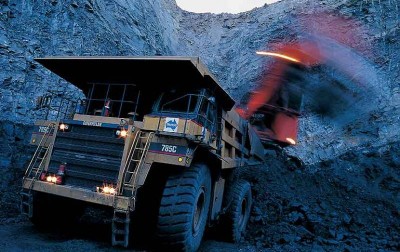The big floods have roused a hornets’ nest over their link to climate change and the potential culpability of coal miners. [1 February | Peter Boyer]
We all know that one swallow doesn’t make a summer, any more than one flood makes a climate catastrophe. Senator Eric Abetz was quick to point this out in a heated rebuke of his fellow-Senator, Greens leader Bob Brown, a fortnight ago.
When Brown declared that a mining super-profits tax as originally proposed should be imposed in full on “coal barons” to help pay for the flood damage, Abetz promptly took the high moral ground.
“Senator Brown’s timing in this period of national mourning shows a public figure at his very lowest,” said Abetz. His “shallow and cynical” idea exposed him as “willing to peddle political propaganda in the face of a natural disaster” to score “cheap political points”.
Abetz concluded: “Climate scientists have warned politicians time and time again that individual extreme weather occurrences cannot be blamed on climate change. Senator Brown has neither science nor common decency on his side and should apologise.”
Fairfax columnist Gerard Henderson admonished Brown for failing to account for Brisbane’s historical floods, at least equal to the current one. Indignant industry representatives joined the fray, declaring Brown to be “irrelevant to mainstream Australia” and claiming that Australian coal made only a tiny contribution to world greenhouse emissions.
Show more decorum, was the message for Brown, and more respect for our captains of industry. But as always in this fraught debate, things are not quite as they seem.
Coal burned in Australia emits upwards of 200 million tonnes of carbon dioxide a year, which isn’t much on a world stage. But adding in the much larger volumes of coal we export more than trebles that figure, to about 2.5 percent of global emissions for all fossil fuels (including oil) — a higher figure than total UK emissions. That doesn’t seem so tiny to me.
Henderson’s claim that previous floods equalled this summer’s Queensland event ignored the huge area of the latter, equal to France and Germany combined. “There’s nothing in the record that comes close to this,” said Greg Hallam, director of the state’s Local Government Association.
 Abetz’s assertion that “individual extreme weather occurrences cannot be blamed on climate change” is correct — to a point. Weather is about day to day happenings, while climate happens over decades, centuries or millennia. One swallow doesn’t make a summer.
Abetz’s assertion that “individual extreme weather occurrences cannot be blamed on climate change” is correct — to a point. Weather is about day to day happenings, while climate happens over decades, centuries or millennia. One swallow doesn’t make a summer.
Abetz chose his words carefully. Individual storms, floods, heatwaves and droughts signify nothing in particular. It’s in combination — in the patterns and trends of their distribution, intensity and impact over many years — that they take on a climatic significance.
Science has clearly established that a warming atmosphere and sea surface (the latter is currently at record levels off north-eastern Australia) will intensify the planet’s water cycle. This means more rapid drying, more moisture in the air, and when rain comes, a greater likelihood that it will be heavier. More intense droughts, more flooding rains — sound familiar?
Global climate models indicate a long-term drying across southern Australia. While southern Western Australia is more parched than ever, south-eastern Australia’s long drought is well and truly over. But it will be years before we can say whether this marks a shift in climate.
New modelling at the University of Tasmania suggests that overall this island will get slightly wetter over the next century, though with plenty of local variation. But with warming surface waters off our east coast, we’re as liable as anyone to suffer a rising incidence of extreme events.
Intensive analysis of 100 years of global weather records, involving people like Lisa Alexander, of the Bureau of Meteorology and Monash University, has found a rising incidence of extreme weather events since 1950, during a time when air and sea surface temperatures rose markedly.
At least as telling as the science is the view of insurers and actuaries — professions which get scant attention in the climate debate despite their central role in managing climate’s impact and their long involvement in international discussions.
Confronted by rising numbers of extreme-weather claims, the global insurance industry is now questioning its long-term capacity to deal with such events, raising the prospect of refusing to insure at all for river flooding and related events.
Global reinsurer Munich Re reports that the large number of major weather-related events (about 900) in 2010 reinforces a long-term rising trend in the number and severity of extreme events. The 2010 crop included Asia’s highest ever temperature (63.5C), vast Pakistan flooding that killed over 1100 people, and Russia’s heat-wave and forest fires that caused 56,000 people to die.
Both Munich Re and Lloyds insurer Hiscox (which has noted a doubling of weather-related disasters over the past 30 years) have firmly attributed the rising incidence and severity of these disasters to global warming.
Brown may have drawn a longish bow in implying a direct link between coal emissions and the floods, but evidence to support his claim is building by the year. His opponents should not be so dismissive.

